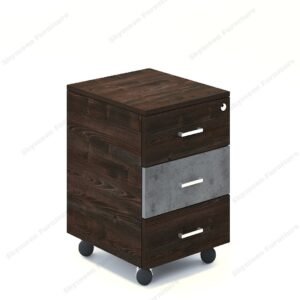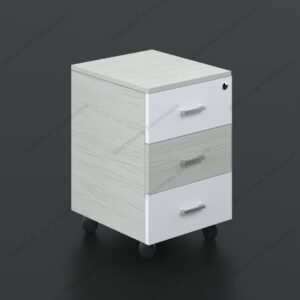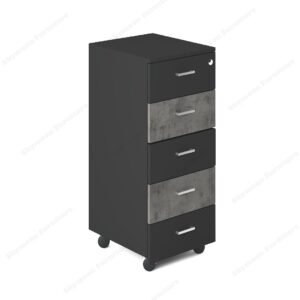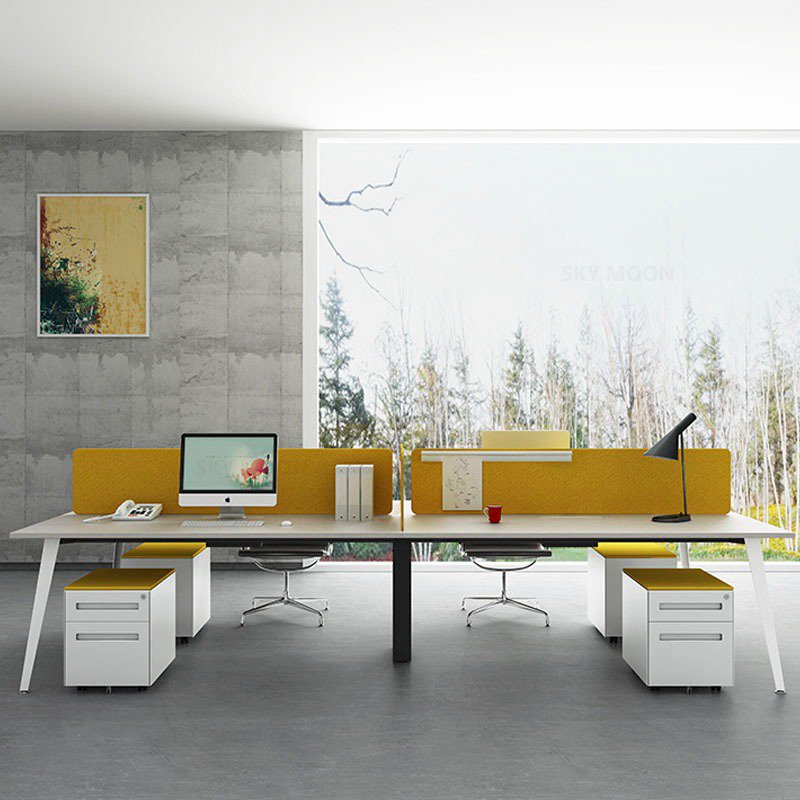Table of Contents
Introduction
Office furniture goes beyond aesthetics it plays a vital role in functionality, comfort, and the well-being of employees. With the right furniture choices, businesses can foster productivity, enhance employee satisfaction, and reflect a company’s values and culture. This guide covers everything you need to know to make informed choices about office furniture.
Types of Office Furniture
Choosing the right office furniture requires understanding the essential types and their specific uses.

Desks
Desks are the centerpiece of any office space, available in various designs to suit different needs.
- Standard Office Desks: Traditional desks that are functional and suitable for most office tasks.
- Standing Desks: Allow employees to alternate between sitting and standing, promoting better posture and health.
- Executive Desks: Larger, often more luxurious desks for managerial positions, reflecting authority and professionalism.
Chairs
Selecting the right chair can significantly impact employee health and comfort.
- Ergonomic Chairs: Designed to support posture and reduce strain, essential for those who spend long hours seated.
- Conference Room Chairs: Comfortable seating for long meetings, often stackable or movable.
- Guest Seating: Stylish and comfortable seating for visitors to feel welcome.
Storage Solutions
Organized spaces reduce clutter and improve efficiency.
- Filing Cabinets: Traditional storage for documents, available in both vertical and lateral options.
- Shelving Units: Used for both storage and display, from books to decor.
- Lockers: Ideal for secure storage, especially in shared workspaces.
Meeting and Collaboration Furniture
Designed to encourage teamwork and efficient meetings.
- Conference Tables: Large tables for meeting rooms, often customizable in size.
- Breakout Furniture: Includes lounge chairs and sofas for relaxed collaboration.
- Whiteboards and Collaborative Tools: Essential for brainstorming sessions and presentations
Key Factors to Consider When Choosing Office Furniture
There are several factors to keep in mind to make a selection that balances comfort, functionality, and budget.
Ergonomics
Ergonomically designed furniture supports good posture, prevents health issues, and enhances comfort.
Space and Layout
Efficient layout planning ensures that the office is functional, without feeling overcrowded.
Quality and Durability
Investing in quality pieces can save money in the long run by reducing replacement costs.
Style and Aesthetic
Choose a style that aligns with the company’s branding and values. Modern or traditional styles can set the tone for the office environment.
Ergonomics and Comfort: Enhancing Employee Health
The importance of ergonomics in office furniture can’t be overstated. Ergonomic furniture supports the body, reducing discomfort and the risk of injury. Adjustable desks and chairs are particularly beneficial, allowing customization based on each individual’s needs.
Popular Office Furniture Materials
Office furniture is made from a range of materials, each offering its own benefits.
- Wood: Classic and durable, wood is ideal for a timeless look.
- Metal: Sturdy and often used in modern designs.
- Glass: Adds sophistication, typically used for tabletops and dividers.
- Plastic and Synthetic Materials: Affordable and versatile, great for budget-conscious buyers.
Modern Trends in Office Furniture Design
Modern office furniture is evolving to support flexible, collaborative, and environmentally conscious workspaces.
- Minimalism: Clean lines and uncluttered spaces enhance focus and clarity.
- Flexible Workspace Solutions: Modular furniture adapts to changing office needs.
- Eco-friendly and Sustainable Options: Furniture made from recycled materials appeals to environmentally conscious companies.
- Technology Integration: Furniture with built-in charging ports and cable management solutions is becoming popular.
Budgeting for Office Furniture
Setting a budget can streamline the selection process, helping prioritize where to spend and where to save. Durable, ergonomic items are worth the investment, while certain decorative pieces can be chosen within budget.
Top Brands in Office Furniture
When quality and durability are priorities, these brands stand out:
- Herman Miller: Known for ergonomic chairs and innovative designs.
- Steelcase: Specializes in collaborative and adaptable workspace solutions.
- IKEA: Offers affordable and versatile options for all office needs.
The Role of Office Furniture in Brand Image
Furniture reflects company values. Clean, modern designs show innovation, while classic styles convey stability and tradition. A welcoming workspace can leave a positive impression on both clients and employees.
Tips for Arranging Office Furniture
Effective furniture arrangement promotes productivity and collaboration.
- Ensure Optimal Workflow: Arrange desks to support task flow and communication.
- Space-Saving Ideas: Use modular storage and compact furniture for smaller offices.
- Create Collaborative Zones: Designate areas for teamwork with comfortable seating and tables.
Maintaining and Caring for Office Furniture
Proper maintenance extends furniture lifespan. Clean wood with a soft cloth, use appropriate cleaners for glass, and periodically check for repairs on ergonomic adjustments.
Conclusion
Office furniture plays a significant role in productivity, comfort, and branding. Investing in quality, ergonomic furniture enhances well-being, creating a workspace where employees thrive. Thoughtful choices in materials, design, and layout can make a lasting impact on company culture.
FAQs
What is the best material for office furniture?
Wood offers timeless durability, while metal and plastic provide modern, versatile options.
How often should office furniture be replaced?
High-quality office furniture can last 7–10 years, but ergonomic pieces may need replacing sooner due to frequent use.
Are ergonomic chairs really worth it?
Yes, ergonomic chairs can reduce back strain, increase comfort, and improve productivity, making them a valuable investment.
What’s the ideal desk height for productivity?
The ideal desk height is around 28–30 inches from the floor but should be adjusted to suit the user’s height.
Can office furniture impact employee health?
Yes, ergonomic furniture supports posture and reduces health issues, impacting overall well-being and productivity.









